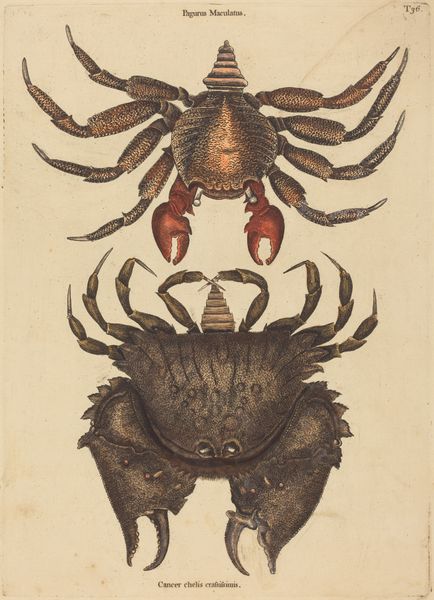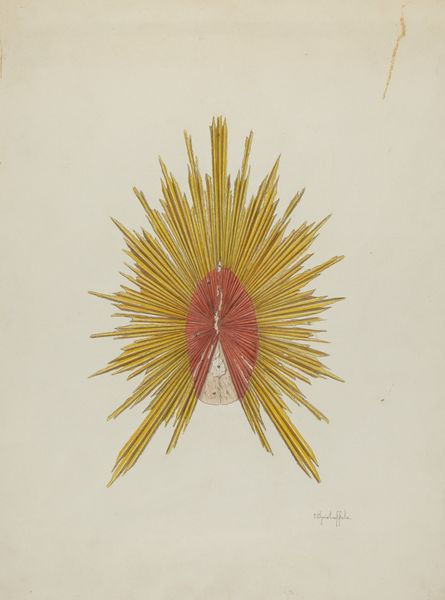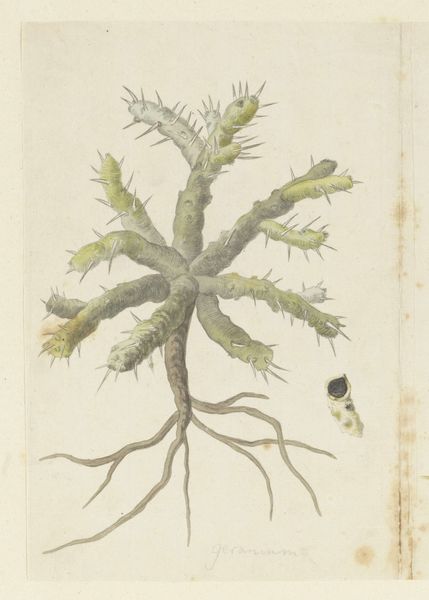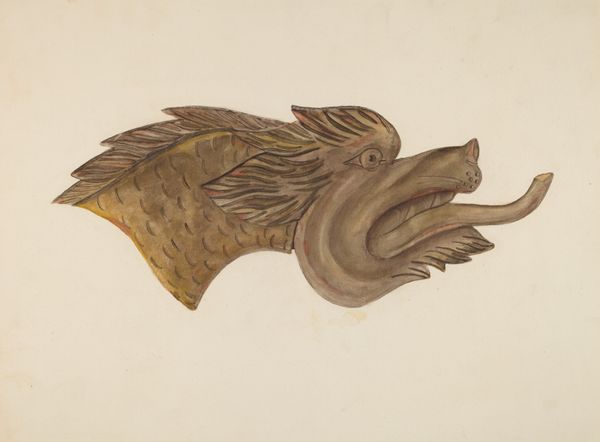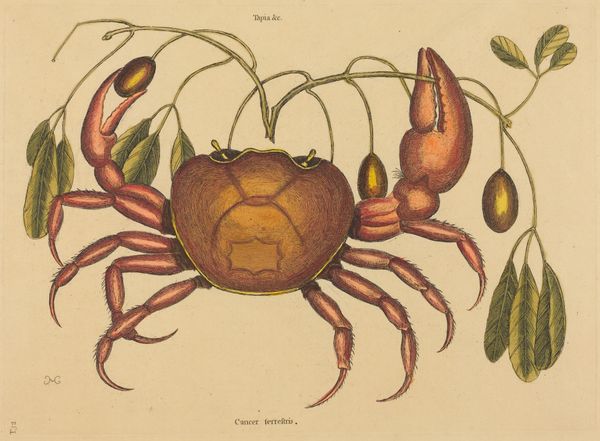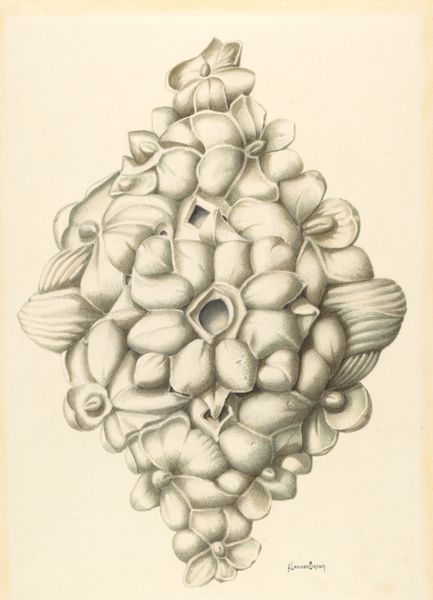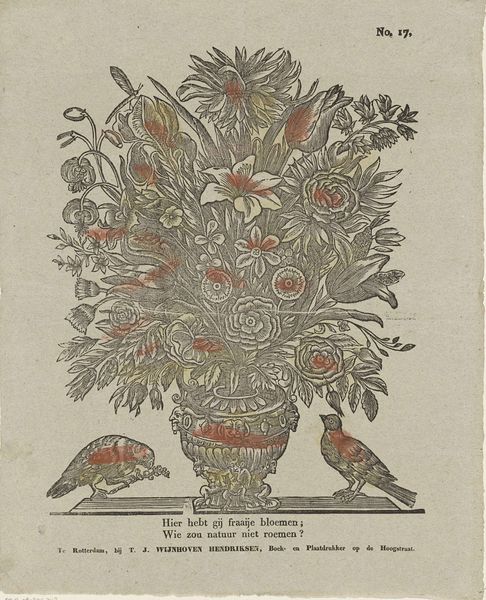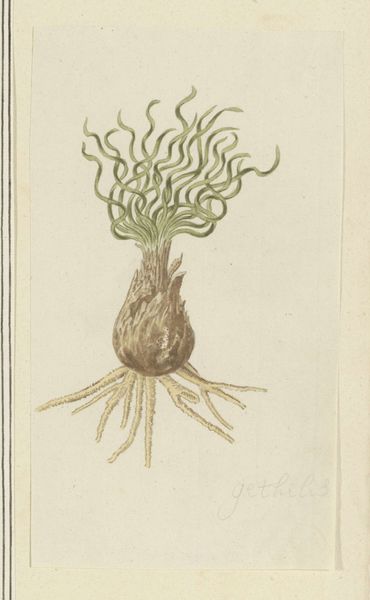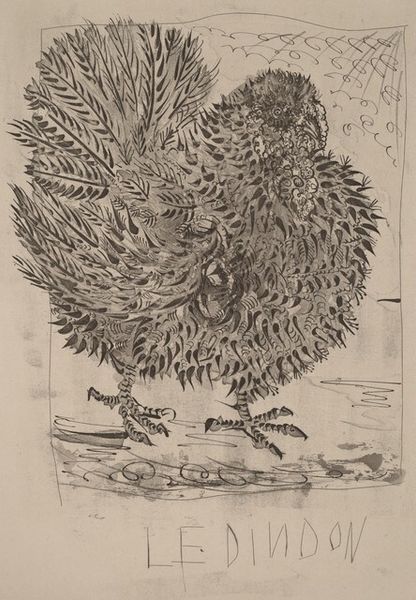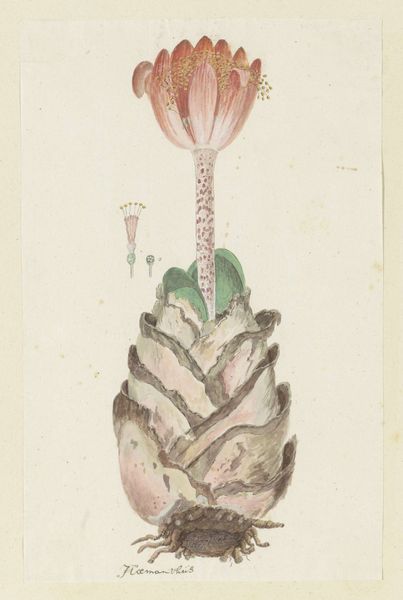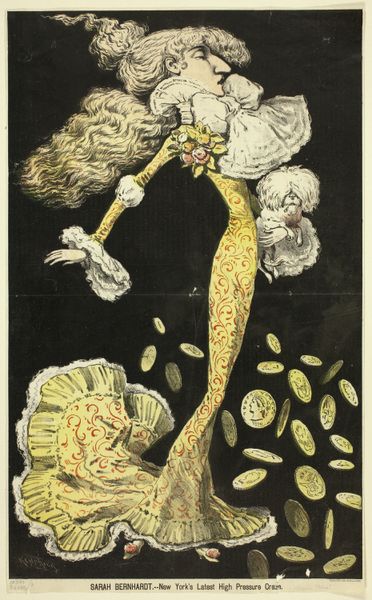
drawing, print, watercolor
#
drawing
#
toned paper
# print
#
botanical illustration
#
watercolor
#
botanical drawing
#
watercolour illustration
#
botanical art
Copyright: National Gallery of Art: CC0 1.0
Curator: This watercolour, print, and drawing hybrid, titled "The Red Clawed Crab," or "Cancer erythropus," is attributed to Mark Catesby and dates roughly between 1731 and 1743. The detailed rendering presents both zoological and botanical elements. Editor: Immediately, the interplay between the crab and the yellow coral-like structure seizes my attention. The crab's placement feels almost staged, like a portrait. Curator: Yes, the composition is quite deliberate. Note how Catesby employs color to create a focal point with the crab's claws, subtly echoed in the branching structure adjacent to it. The rest of the piece adheres to a strict naturalism, offering a descriptive record more than an emotive interpretation. Editor: Precisely. In a historical context, this image served not just as art but as scientific documentation. How does it negotiate the colonial gaze inherent in this period's natural histories? I'm thinking about the public role of botanical and zoological illustrations within empire building. Curator: Good point. While this example meticulously depicts form, the use of the toned paper softens the rendering, almost as if the artist seeks to temper clinical distance with aesthetic pleasure. The crab itself is so carefully observed—the tiny hairs on its legs, the gradations of tone. These details underscore the integrity of his pursuit, attempting perhaps to present an objective truth about the animal. Editor: Perhaps, but even objectivity can serve a particular cultural narrative. Think about the societal forces shaping Catesby’s choice of subjects and the selective depiction of nature within colonial power structures. Also, let's consider how printmaking would allow reproduction of such images for disseminating them. Curator: So the work operates on several levels. At its surface, it is a detailed natural study, demonstrating a fascination with minute detail and structure. But embedded in its creation and subsequent distribution are the scientific, social, and political dimensions of its era. Editor: It becomes more than a pretty picture; it becomes a lens through which we can view the ambitions and assumptions of a particular historical moment. Curator: An excellent synthesis; it showcases the intrinsic structure and composition of Catesby's piece while layering on the context of that historical perspective.
Comments
No comments
Be the first to comment and join the conversation on the ultimate creative platform.
